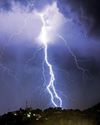
In a basement laboratory abutting a 730-hectare wildlife park in San Diego, California, Marlys Houck looks up to see a uniformed man holding a blue insulated lunch bag filled with small pieces of eyes, trachea, feet and feathers.
"Ah," she says, softly. "Here are today's samples."
The bag contains small bits of soft tissue from animals who have died of natural causes at the zoo. Today's samples include a leaf frog and a starling.
The man holding the bag is James Boggeln, a volunteer with the zoo, who hands it to Houck, the curator of this laboratory, known as the "Frozen Zoo". She and her team will start turning these bits of tissue into a bank of research and conservation for the future. They will put the tissue into flasks where enzymes digest them, then the lab members will slowly incubate them over a month - growing an abundance of cells that can be frozen and reanimated for future use.
At nearly 50 years old, the Frozen Zoo holds the world's oldest, largest and most diverse repository of living cell cultures more than 11,000 samples that represent 1,300 different species and subspecies, including three extinct species and more that are very close to extinction.
Today the Frozen Zoo is operated by an all-female team of four, who watch over a vast collection of hand-marked vials with labels such as "giraffe", "rhino" and "armadillo", all stored in massive circular tanks filled with liquid nitrogen. In a world suffering from a climate and biodiversity crisis, putting species on ice offers one way to be hopeful about the future.
The work done here has always felt meaningful, but an accelerating extinction crisis has put mounting pressure on Houck and her team. It's a race against time to put samples into the Frozen Zoo before they slip away from the world. The women see it as their duty to hold the future in place.
This story is from the {{IssueName}} edition of {{MagazineName}}.
Start your 7-day Magzter GOLD free trial to access thousands of curated premium stories, and 9,000+ magazines and newspapers.
Already a subscriber ? Sign In
This story is from the {{IssueName}} edition of {{MagazineName}}.
Start your 7-day Magzter GOLD free trial to access thousands of curated premium stories, and 9,000+ magazines and newspapers.
Already a subscriber? Sign In

If kids get protected from online harm, how about the rest of us?
The Australian government has proposed a ban on social media for all citizens under 16.

'It's not drought - it's looting'
Spain is increasingly either parched or flooded - and one group is profiting from these extremes: the thirsty multinational companies forcing angry citizens to pay for water in bottles.

Life in the grey Zone
Neonatal care has advanced so far that babies born as early as 21 weeks have survived. But is this type of care always the right thing to do?

Out of tune? Band Aid under fire for Africa tropes as it turns 40
Forty years ago this month, a group of pop stars gathered at a west London studio to record a single that would raise millions, inspire further starry projects, and ultimately change charity fundraising in the UK.

Deaths shine spotlight on risks of drinking on party trail
Vang Vieng is an unlikely party hub. Surrounded by striking limestone mountains and caves in central Laos, it morphed from a small farming town to a hedonistic tourist destination in the early 2000s.

Different strokes My strange and emotional week with an AI pet
Moflin can develop a personality and build a rapport with its owner - and doesn't need food or exercise. But is it comforting or alienating?

Strike zone Waking up to the rising threat of lightning
When the Barbados National Archives, home to one of the world's most significant collections of documents from the transatlantic slave trade, reported in June that it had been struck by lightning, it received sympathy and offers of support locally and internationally.

Cheap pints and sticky carpets: the old-school pub is back
In the Palm Tree pub, east London, barman Alf is taking only cash at the rattling 1960s till.

Brain gain Can a radical tax scheme convince the country's brightest to stay?
In the autumn of 2018, I moved to Lisbon for a month-long course at the Universidade .de Lisboa.

Fear and sympathy in small town divided over asylum camp
A year after anti-immigration riots, a site for asylum seekers faces hostility while some locals try to help new arrivals